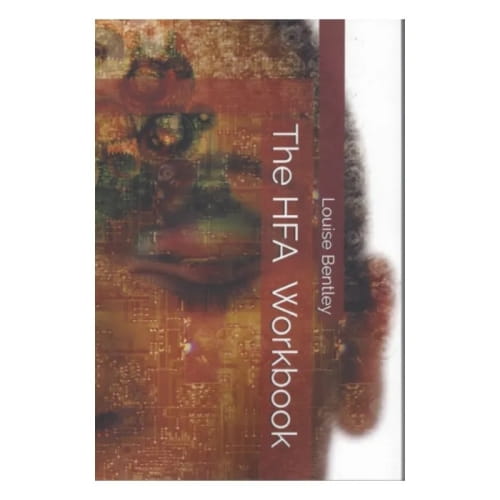The HFA Workbook is the latest book in the HFA series. Based on more than 20 years research and clinical application, The HFA Workbook is the ultimate desktop workbook for HFA users. Detailing every aspect of HFA from taking photos to allocating facial features, this latest HFA book will answer many of the questions HFA practitioners and students ask.
HFA history
More than 20 years ago, VCCH (Victorian College of Classical Homeopathy) led by principal Grant Bentley, began a research project involving the concept of miasms (Hahnemann's version) and facial structure. Within a few years, HFA (Homeopathic Facial Analysis) was born. Quickly proving itself in the clinic, facial structure became the ultimate and only diagnostic to determine a patient's miasm. With time, the idea of a miasm being a pathological base, transitioned to the idea of a defence mechanism. Once this link was understood, a transformation in clinical outcomes began. Built upon Hahnemann's miasm legacy (Chronic Miasms 1828), HFA opens up the potential of Homeopathy as never before.
Contents of The HFA Workbook
New facial sketches. How to take photos. The universal principles that underpin HFA. Detailed examination of each facial of the features - hairlines, foreheads, eyes, bridge, nose, mouth, lips, teeth, chin, ears, lines and dimples - each area of the face is examined and discussed. A variety of new sketches with training lines, will help the new HFA student to develop their facial analysis skills and will offer the HFA practitioner a full guide on how to allocate facial features to ensure remedy choices match the patient miasm. Case examples highlight how successful HFA application can be in a clinical setting. The HFA Workbook is Louise Bentley's first HFA book. Louise has worked with Grant since 1999 on the HFA project as research assistant, editor and production manager. While Grant has been busy with full time clinic, Louise has put together every aspect of HFA as of 2021.
- Author: Louise Bentley
- ISBN: 9798730918122
- Paperback
- Published in 2021
- Printed in Australia
Reprinted with the permission of The Society of Homeopaths, (from 'The New Homeopath' Journal, Summer 2022 edition). Reviewed by Anne Speirs.
Homeopathic Facial Analysis (HFA) was introduced via the Victorian College of Classical Homeopathy (VCCH) Melbourne, Australia as a miasmatic research project more than 20 years ago. Principal Grant Bentley asked the question, "What did Hahnemann want us to do clinically with the concept of a miasm?" By 2003 the first HFA book, Appearance and Circumstance was published, followed by Homeopathic Facial Analysis, Soul and Survival, How Aphorism 27 Change the World and PANDAS: Reaching Out, a natural and homeopathic approach. This body of work about HFA has also been complemented with VCCH being one of the first online homeopathic training colleges in the world, teaching both homeopathy and HFA to students in more than 25 countries. HFA continues to be the only objective diagnostic for the concept that Hahnemann called a miasm and Grant Bentley calls a survival instinct or defence mechanism.
HFA is an indispensable diagnostic in the clinic. Knowing the dominant miasm of the patient before their first chronic remedy is chosen, limits remedy choices with accuracy and confidence. Results are strong with patients experiencing solid reproducible results within one and four remedies.
Perfecting
Louise Bentley has worked with her husband Grant for more than two decades testing and perfecting the HFA method. Although Louise worked on production of the previous five HFA books, this is her first solo book detailing the concepts behind HFA and how to use facial analysis. She details how to take facial photos precisely to accurately work out a patient's dominant miasm. The book then specifies the variations of facial structure and how to allocate each feature properly to its primary miasm. The HFA Workbook contains more than 300 facial sketches and an up-to-date list of HFA allocated polychrest remedies.
Previous HFA books have focused on the philosophy and development of HFA; The HFA Workbook covers a brief introduction to the HFA foundations (including the directional forces of the three primary miasms) then its major focus is on the facial features and how to allocate them correctly. This book is for clinical users and will be a mainstay in the clinic along with the newly released HFA facial analysis software (an interactive e-form of the book) through Complete Dynamics. Every effort has gone into developing and encouraging students and practitioners to be the best homeopaths they can be using this insightful and practical method.
Having worked in homeopathy for more than 20 years, I have a strong appreciation of the benefits of using the HFA method for all chronic cases. Homeopathy is a wonderful energetic restorative model and HFA the ultimate miasmatic diagnostic to support totality remedies. I strongly urge all Homeopaths to learn and test the HFA method in their own clinics. This unbiased objective technique will leave practitioners and students alike wondering how they could practise without this knowledge.

